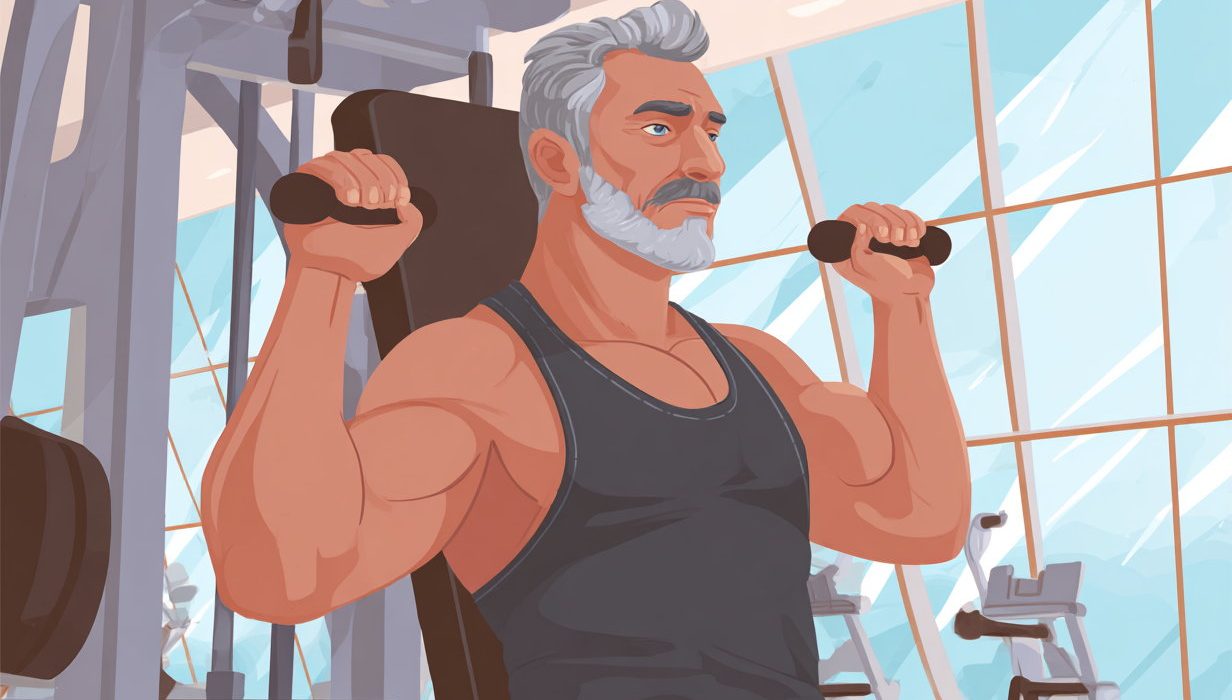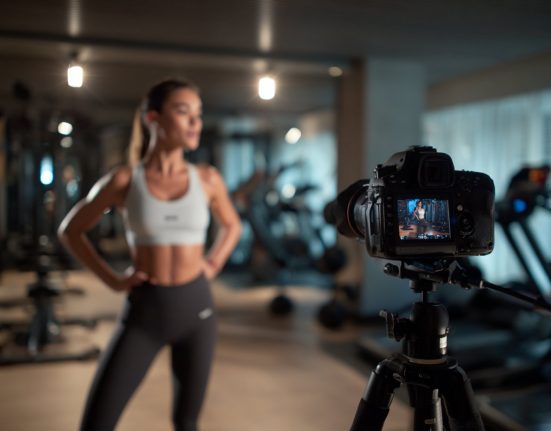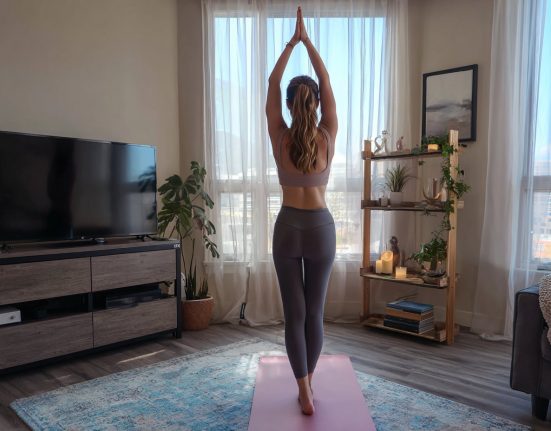Cardio exercise gets plenty of credit for keeping your heart healthy. Regular weightlifting has its own benefits, too, especially for older adults.
But it can be more than a little confusing to figure out how to start a strength training routine. It also takes some practice to perfect your form and prevent injuries.
To help you get started, keep reading for weightlifting benefits, the top five dumbbell exercises for older adults, and expert tips for building strength safely and with confidence.
Benefits of Strength Training for Older Adults
Resistance training has been shown to improve strength, energy, and mobility as well as lower the risk of heart disease and type 2 diabetes.
Weightlifting has also been linked with a reduced risk of some forms of cancer.
Plus, by helping you stay stable on your feet and strengthening your bones, resistance training can help you avoid falls. If you do take a tumble, it can slim your chances of breaking anything, says New York-based certified personal trainer Carolina Araujo.
A dumbbell workout is a great strength training option because you can customize the workout by selecting the right weights.
The 5 Best Dumbbell Exercises for Older Adults
It can be helpful to have a few different weights available so you have a light, medium, and heavy option.
If you’ve only got room for one in your budget, aim for a weight you can comfortably lift 12 to 15 times.
Your last couple of reps should feel challenging, but not too challenging that you sacrifice your form. Adjustable dumbbells give you even more versatility.
Here are five exercises to try. Remember to get clearance from your doctor before starting a new exercise program, particularly if you have (or have had) an injury or health issue that could interfere with your ability to safely exercise.
1. Goblet Squat
The squat is a staple of day-to-day life (think: getting up from a chair, sitting down on the toilet). That’s why it’s so important to strengthen your squats, Araujo says.
This exercise targets your leg muscles, including your quads, glutes, and hamstrings.
It also works your core to help improve your overall stability.
You can make this exercise a little easier by lowering into a chair with each rep, Araujo says. Or, if you’re ready for a challenge, add a three-second pause at the bottom of the motion.
Here’s how to do a goblet squat:
- Hold a dumbbell by one end at chest height.
- Begin with your feet just wider than hip-distance apart. Your toes can face forward or turn out slightly.
- Keeping your chest tall and core tight, bend your hips and knees to sink into a squat so your upper legs are parallel with the floor or as low as you can comfortably go with good form.
- Press through all four corners of your feet to return to standing.
2. Dumbbell Bench Press
Just like the squat, the chest press is a compound exercise that works multiple joints and muscle groups at once. The upper-body move strengthens your chest, shoulders, and triceps.
If you don’t have a workout bench available, you can use an at-home weight bench alternative, like the floor, a piano bench, or other stable surface.
Here’s how to do the exercise:
- Lie on your back on a bench or other flat surface with a dumbbell in each hand. Hold the weights with straight arms above your chest. Plant your feet firmly on the floor and tighten your abs.
- Bend your shoulders and elbows to lower the weights until they’re in line with your chest or as low as you can comfortably go with good form. Your forearms should be completely vertical at all times.
- Press the weights back up over your chest.
3. Dumbbell Deadlift
Practicing your deadlifts with dumbbells strengthens your glutes, hamstrings, core, and lats. It also helps you learn proper form for everyday feats of strength. Picking up a pen may feel easy, but when you’re lifting a heavy box off the floor, using proper form is critical to side-stepping injury, especially in your lower back.
The deadlift is one of the most functional dumbbell exercises for older adults, Araujo says. To lower into a deadlift, envision yourself trying to push your butt against a wall behind you, Araujo says. Keep your back flat and knees pointing forward at all times.
Here’s how to do the exercise:
- Stand with your feet hip-width apart, holding a dumbbell in each hand in front of your thighs, palms facing your body. Brace your core.
- Push your hips back and soften your knees to lower the weights toward the middle of your shins.
- Check your posture: Your spine should be straight and long, chest up and open, shoulders back.
- To stand up, push your feet into the floor and squeeze your glutes. Imagine you’re trying to push the floor away from you.
- Reverse the motion to lower the weights with control. Repeat.
4. Dumbbell Scaption
Our shoulders often lose strength and mobility as we age. The dumbbell scaption is a great exercise to change that and does so without aggravating sensitive joints. It tends to feel more comfortable than lateral, or side, shoulder raises.
Don’t arch your lower back or use momentum. Keeping your core and glutes braced will help keep your back happy.
Here’s how to do the dumbbell scaption:
- Start standing with a dumbbell in each hand, arms at your sides, palms facing in.
- Brace your core and lift the dumbbells in front of your body at about a 45-degree angle.
- Raise the weights until they’re slightly above shoulder height.
- Lower the weights back down with control.
5. Dumbbell Row
Forward motions, like driving a car or typing on the computer, can take a toll on your posture.
Over time, this can cause lower back pain or a hunched upper back, Araujo says.
Strengthening your back muscles can help. The dumbbell row strengthens the muscles up and down your spine and around your shoulder blades to help improve your alignment. It also works your deep core muscles, which can further relieve back pain, Araujo says.
To modify this exercise, lift one dumbbell at a time. Place your free hand on a chair or bench for extra balance, Araujo says. Or, make it harder by lowering the weights over a three-second count.
- Stand with your feet hip-width apart, holding a dumbbell in each hand in front of your thighs. Push your hips back and hinge forward at least 45 degrees (and as much as 90 degrees), keeping your back flat. Start with your arms extended toward the ground, palms facing each other.
- Squeeze your shoulder blades down and together, then bend your elbows to pull the weights toward your lower abdomen.
- Pause, then lower the weights with control.
4 Dumbbell Exercise Tips for Older Adults
If you’re ready to incorporate dumbbell exercises into your fitness routine, here are some more tips to keep in mind.
1. Do No More Than 3, 30-Minute Sessions Per Week
Rest is important. If you’re new to lifting weights, aim for two to three total-body workouts each week, Araujo recommends.
“Between your dumbbell workouts, you can do some cardio exercise, like walking or biking, but don’t neglect your recovery,” she says. “The last thing you want is to get injured because you did too much too fast.”
In the first few months of strength training, your workouts shouldn’t last much longer than 30 or 45 minutes.
2. Try 4 Sets of 10 Reps
As a general guideline, to build muscle, you should do at least three to six sets of 6 to 12 repetitions of your resistance exercises.
Araujo recommends you start doing each move for 4 sets of 10 reps.
Between each set and exercise, rest between 90 and 120 seconds. But if you feel like you need more rest, take it!
3. Increase Weights Gradually
The weight you use will vary by exercise. Most older adults can start with 15-pound weights for lower-body exercises and 5- or 7.5-pound dumbbells for upper-body movements, but you should adjust based on your comfort and ability, Araujo says.
Most importantly, pick a weight you can comfortably control, she says. If you finish a set and feel you could do another straight away, you can probably increase the weight a bit. If your form gets shaky toward the end of a set, your dumbbells are probably too heavy.
To build muscle and strength over time, you also need to consistently increase the weight you’re lifting or the number of sets and reps you’re doing (aka progressive overload).
If your dumbbell exercises start to feel easy, that’s a sign you’re ready for a change in your routine.
4. Always Warm Up and Cool Down
Every training session should begin with a warm-up and end with a cooldown, Araujo says. Although they’re easy to skip, these parts of your workout are just as important as all the dumbbell-lifting in the middle.
Warm up with a few dynamic stretches, like clamshells and inchworms. Or, to make things even simpler, run through your dumbbell workout using just your body weight, Araujo says.
Then, save the last few minutes of your exercise session for a few cooldown static stretches. These will help gradually bring your heart rate back down and promote recovery, Araujo says.
And remember, listening to your body is an important part of preventing injury. If you experience any sharp pain, particularly around your joints, stop the exercise you’re doing and talk to your doctor.









